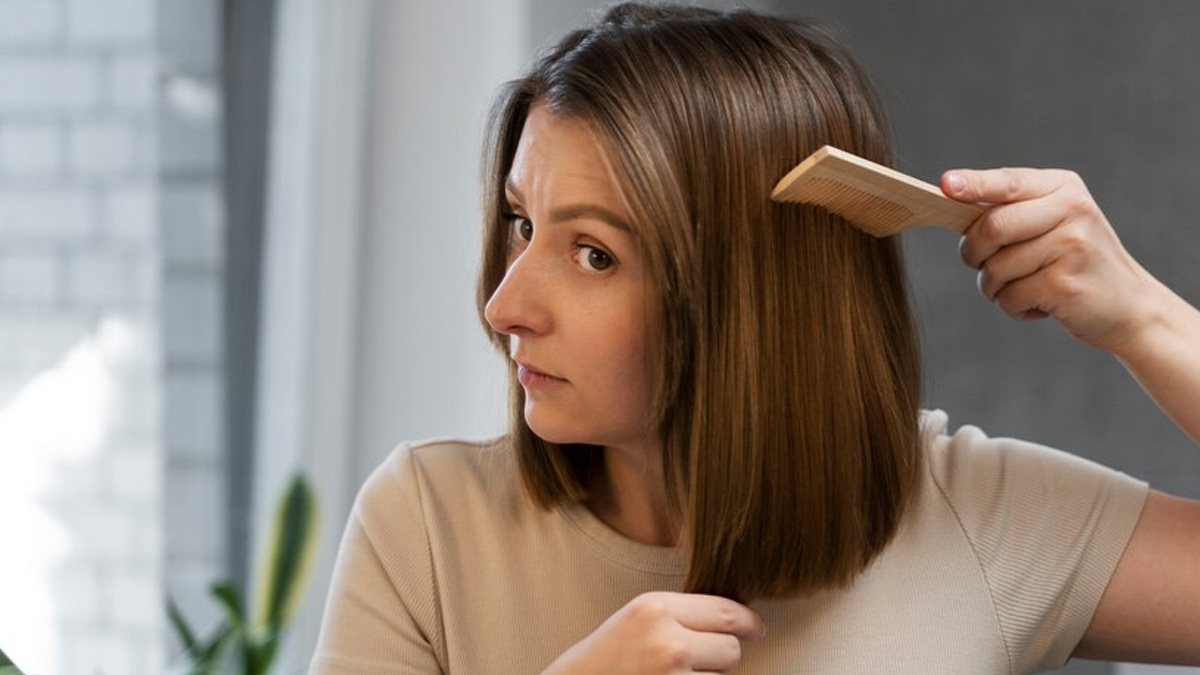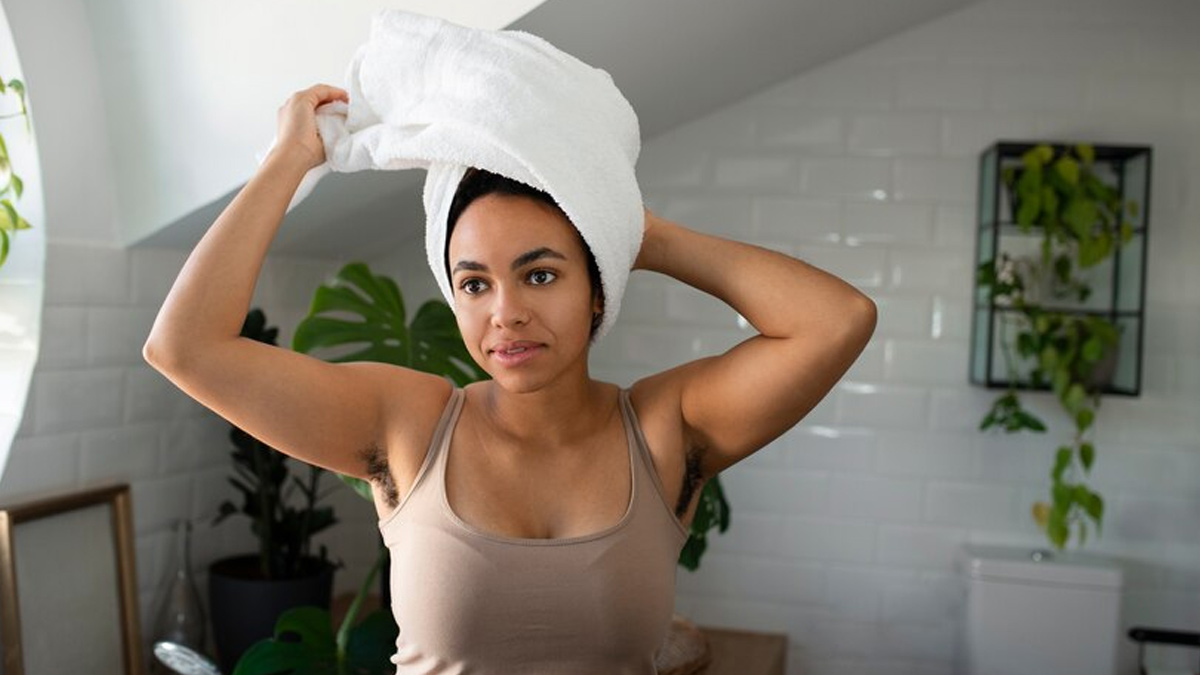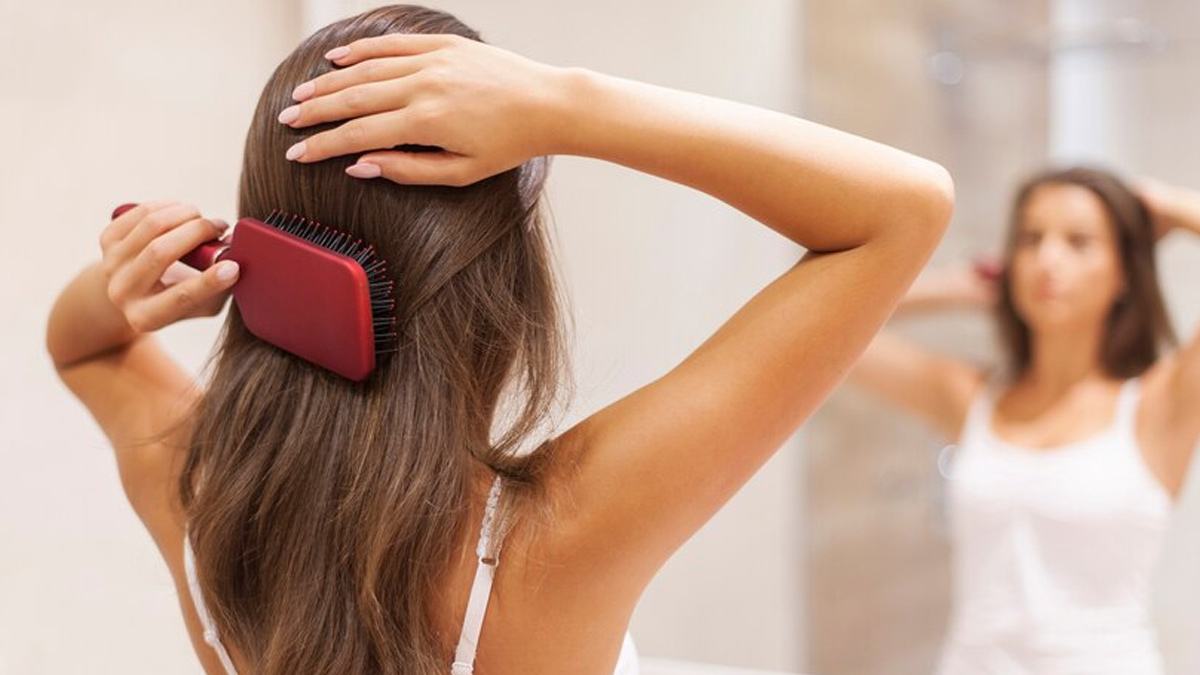
When it comes to hair care, understanding your hair’s porosity can be a game-changer. Hair porosity is the hair's ability to soak up and hold moisture, which is crucial for maintaining healthy hair. It’s influenced by the structure of your hair cuticle, which is the outer layer of your hair. Low porosity hair, in particular, has some unique characteristics that require specific care to keep it healthy and vibrant. In this article, we’ll explain what low porosity hair is, how to identify it and offer practical tips for managing and caring for it.
Table of Content:-
What Is Low Porosity Hair?

Low porosity hair is characterised by a tightly bound cuticle layer with overlapping scales that lay flat. This makes it difficult for moisture to penetrate the hair shaft, which can lead to product buildup and a lack of moisture absorption.
People with low porosity hair often find that water beads up on their hair instead of being absorbed, and products tend to sit on top of the hair rather than sinking in.
Characteristics of Low Porosity Hair

- Moisture Resistance: One of the most noticeable signs of low porosity hair is its resistance to moisture. Whether you're applying water, conditioners, or oils, you may notice that your hair takes longer to get wet, and products seem to just sit on top of your strands.
- Slow Drying Time: While low porosity hair resists moisture, once it does get wet, it can take a long time to dry. This is because the tightly packed cuticle layer doesn’t easily allow moisture to escape.
- Prone to Product Buildup: Low porosity hair is prone to product buildup because it does not readily absorb products. This can leave your hair feeling heavy, greasy, or coated.
- Lack of Elasticity: Low porosity hair can sometimes feel stiff and lack the elasticity that helps it bounce back when styled. This can make it more prone to breakage if not handled carefully.
- Shiny Appearance: Due to the smooth, flat cuticles, low porosity hair often has a naturally shiny appearance. However, this shine can sometimes make the hair appear greasy if products are not absorbed properly.
Also Read: Beauty Benefits Of Marula Oil: Here's How This Oil Can Promote Skin And Hair Health
Tips for Caring for Low Porosity Hair
Here are some tips to help you manage and care for your low porosity hair effectively:
Use Heat to Help Products Penetrate

Using heat can help open the cuticles and allow products to penetrate better because low porosity hair has a tightly closed cuticle layer. When applying deep conditioners or oils, use a warm towel, steam cap, or sit under a hooded dryer to help the product absorb into your hair. This technique can make a significant difference in how well your hair retains moisture.
Choose the Right Products
For low-porosity hair, it’s essential to choose lightweight, water-based products that won’t sit on the surface of your hair. Look for leave-in conditioners, moisturisers, and stylers that contain humectants like glycerin or honey, which draw moisture into the hair. Also, avoid heavy oils and butter, as they can lead to buildup.
Clarify Regularly
Since low porosity hair is prone to product buildup, it’s important to clarify your hair regularly. Use a gentle clarifying shampoo or an apple cider vinegar rinse to remove excess product and buildup from your hair. This will help your hair better absorb moisture and maintain its health.
Also Read: Dark Side Of Dry Shampoos: Expert Reveals The Risks To Your Hair And Scalp Health
Avoid Protein Overload

Low porosity hair can be sensitive to protein, which can make the hair feel stiff and brittle. While protein treatments are beneficial for some hair types, they can often be too much for low porosity hair. Hence, opt for moisture-based deep conditioners and treatments instead, and use protein treatments sparingly.
Seal in Moisture
After hydrating your hair, it’s important to seal in that moisture to prevent it from evaporating. Use a lightweight oil, like argan or jojoba oil, to seal in moisture without weighing your hair down. This step is especially important after washing and conditioning your hair.
Be Gentle with Styling

Low porosity hair can be more prone to breakage if not handled carefully. When detangling, use a wide-tooth comb or your fingers, and always start from the ends, working your way up to the roots. Avoid styles that put too much tension on your hair, and opt for protective styles that minimise manipulation.
Deep Condition Regularly
To keep your low porosity hair hydrated and healthy, make deep conditioning a regular part of your routine. Look for deep conditioners that are specifically formulated for moisture retention and use them once a week. Remember to apply heat to help the product penetrate your hair for the best results.
[Disclaimer: This article contains information for informational purposes only, hence, we advise you to consult your own professional if you are dealing with any hair issues to avoid complications.]
Also watch this video
How we keep this article up to date:
We work with experts and keep a close eye on the latest in health and wellness. Whenever there is a new research or helpful information, we update our articles with accurate and useful advice.
Current Version
